Order Brachyspirales Scientific name Brachyspira Rank Genus | Family Brachyspiraceae Higher classification Brachyspiraceae | |
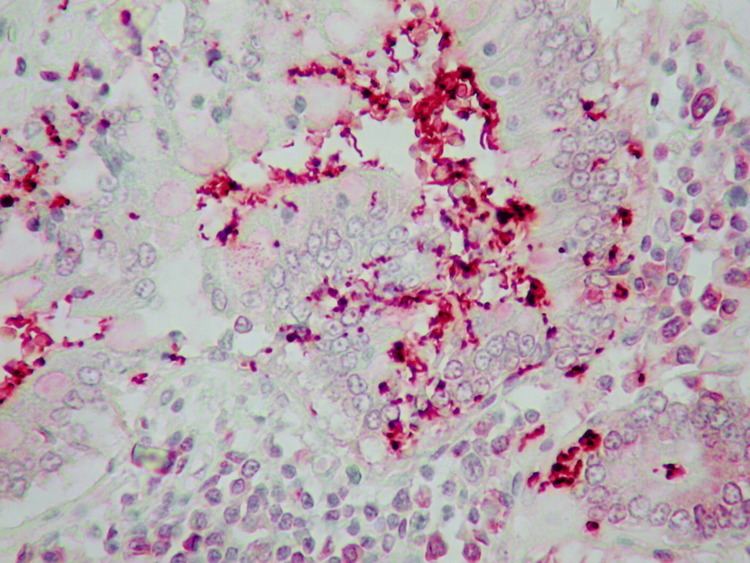 | ||
Lower classifications Serpulina hyodysenteriae, Brachyspira pilosicoli | ||
Brachyspira swimming in a highly viscous liquid
Brachyspira is a genus of Bacteria classified within the phylum Spirochaetes.
Contents
- Brachyspira swimming in a highly viscous liquid
- Iowa farm visit to find brachyspira colitis diarrhea in swine
- Significance
- Change in ecology
- Phylogeny
- Microbiologic identification
- Antibiotic treatment
- Antibiotic resistance
- References
Iowa farm visit to find brachyspira colitis diarrhea in swine
Significance

Brachyspira species include known pathogens in animals, mostly pigs but also birds, dogs, and humans while some species like B. innocens or B. intermedia are considered harmless commensals in animals.
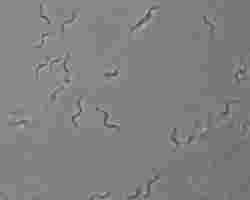
B. hyodysenteriae and B. pilosicoli are the classic Brachyspira gastrointestinal pathogens leading to diarrheal disease in growing pigs worldwide, causing the so-called swine dysentery, typhlocolitis or porcine intestinal spirochaetosis, which contributes to major "production losses" in agrobusiness.
B. intermedia and B. pilosicoli can cause disease in poultry.
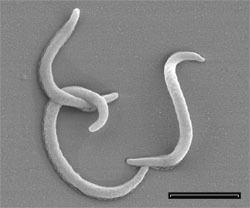
B. pilosicoli can infect humans leading to human intestinal spirochaetosis, however most cases of HIS are caused by B. aalborgi, so its clinical relevance remains unclear.
Change in ecology
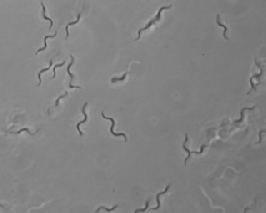
In the U.S.A. Brachyspira-associated pig disease and isolation of Brachyspira species from swine with diarrheal disease largely disappeared from swine herds in the late 1990s and early 2000s, but returned in the mid-2000s for unknown reasons.

A 2011 study of isolates from Midwestern swine herds described major changes in Brachyspira spp frequency and hemolysis, i.e. pathogenicity: the majority of isolated Brachyspira species were previously considered minimally pathogenic or commensal, like Brachyspira murdochi (27%)or novel/unclassifiable Brachyspira species (25%), while only 40.5% of 79 isolates from diseased pigs could be confirmed as the classic pathogens B. hyodysenteriae or Brachyspira pilosicoli by PCR. Brachyspira species previously capable of weak hemolysis only, like B. intermedia and B. pilosicoli were found to produce strong hemolysis. They were also frequently identified from diseased swine which suggests they are emerging pathogens.
A compelling explanation for this change in epidemiology and ecology is selection by the increasing use of antibiotics in pigs (e.g. as growth promoters), since B. murdochii and unclassifiable Brachyspira spp. are less susceptible to antimicrobials than the previously established Brachyspira pathogens.
Phylogeny
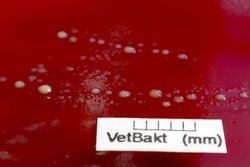
The currently accepted taxonomy is based on the List of Prokaryotic names with Standing in Nomenclature (LPSN) and National Center for Biotechnology Information (NCBI), and the phylogeny is based on 16S rRNA-based LTP release 123 by 'The All-Species Living Tree' Project.
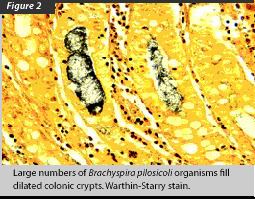
♠ Strains found at the National Center for Biotechnology Information (NCBI) but not listed in the List of Prokaryotic names with Standing in Nomenclature (LSPN).
Microbiologic identification
Brachyspira are capable of hemolysis, the degree of which has been used to characterize them, with B. hyodysenteriae showing strong beta hemolysis while B. pilosicoli, B. intermedia, B. murdochii, and B. innocens have been described as weakly hemolytic. However, in a recent study from Iowa State University, all (10/10) B. intermedia isolates, 91% (9/11) of Brachyspira spp. isolates, and 20% (2/6) of B. pilosicoli isolates from farms in North Carolina (36), Iowa (23), Minnesota (9), Nebraska (3), Michigan (2), Illinois (2), Missouri (1), North Dakota (1), South Dakota (1), and Ohio (1), demonstrated strong beta-hemolysis.
Antibiotic treatment
Veterinary antibiotics used to treat pigs with dysentery due to Brachyspira species include the lincosamide lincomycin, the ionophore salinomycin, the quinoxaline carbadox, the pleuromodulins tiamulin and valnemulin, as well as the aminoglycoside gentamicin, an important antibiotic used in humans.
Antibiotic resistance
Brachyspira resistance to the above antibiotics has been increasingly reported. While no Clinical and Laboratory Standards Institute (CLSI) antimicrobial breakpoints for Brachyspira have been established, resistance to the pleuromutilins tiamulin and valnemulin is considered at MIC ≥ 2 µg/ml. Resistance to pleuromutilins is important, because they are antibiotics of "last resort"; as of 2001, they were the only antibiotics with sufficient minimum inhibitory concentration (MIC) values left to treat swine dysentery in Sweden, per the National Veterinary Institute in Uppsala.
Antibiotic resistance varies by geographic region and is not developing as rapidly in U.S. isolates as has been seen in isolates from other countries. Tiamulin resistance was first described in 1996 in Hungary, and subsequently reported from other countries in Europe and Asia,. In Spain, 7.4% of Brachyspira isolates were reported to be venamulin resistant and 17.6% were tiamulin resistant in 2009. In Sweden, 10-15% of B. pilosicoli isolates between 2002 and 2010 were resistant to tiamulin (MICs >4 μg/ml), and a gradual increase in tiamulin MICs was seen in B. hyodysenteriae between 1990 and 2003, which has since plateaued.
Decreased susceptibility to lincomycin, but not to tiamulin was found among Polish isolates.
In the USA, resistance of Brachyspira species collected 2008-2010 was common only against lincomycin (80% had MIC of 32 or 64), MIC's were moderatetly high against gentamicin, while resistance to valnemulin(4.7%) and tiamulin (3.2% of isolates) was yet uncommon, as reported in the only U.S. study to date, from Iowa.
The use of pleuromutilins in U.S. food animals is unfortunately not separately reported in the U.S. Food and Drug Administration's annual Animal Drug User Fee Act (ADUFA) report, "Antimicrobials Sold or Distributed for Use in Food-Producing Animals". However, the amount of 190 t of lincosamides used is substantial per ADUFA; Antibiotics used in the U.S. in food animals in 2011 was Ionophores 4,123,259 kg, Aminoglycosides 214,895 kg, and Lincosamides 190,101 kg.
